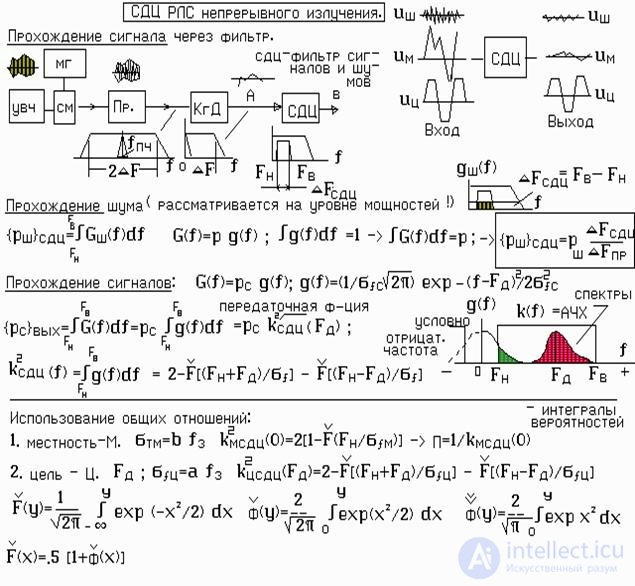
The search for ground and low-flying targets is accompanied by powerful interference from the terrain. Target detection in the background of passive interference is not effective. Therefore, devices have been created, or rather a third-level system, called the SDC. Their task was the complete or partial suppression of passive interference and the selection of moving targets.
The simplest system is the one that is built into the radar of continuous radiation.
The signal from the output of the phase detector has a spectrum in the range of sound frequencies. Therefore, the construction of low-pass filters for noise suppression and selection of moving targets is not a difficult task.
When stationary radar terrain and plant formation does not move. The wind mixes only foliage and branches. Therefore, the spectrum of passive interference lies in the region of zero and has an effective width s fc about 4-40 Hz, depending on the wavelength, wind speed and type of plant formation.
Target signals have about the same amount of effective frequency spectrum bandwidth. But the spectrum is shifted by the Doppler frequency F d and has a left and right "wing". Moreover, the model of interference and signals can be represented as a normal stationary process. Thus, in the case of a goal or interference, the model of the spectra can be represented as the probability density of power on the frequency axis with a Gaussian curve in the region from zero (for terrain) or from zero to plus infinity ( for moving targets). The mathematical description of the Gauss curve is known . Therefore, for a complete representation of the spectrum of G ( f ), it is sufficient to know the frequency F d and s fc .
Imagine the full spectrum G ( f ) = p g ( f ). This is true. Integral from G ( f ) df will give a signal strength. The integral of g ( f ) df will give the unit as the probability density. This approach greatly simplifies the calculations. So, integrating g ( f ) df from the lower frequency to the upper cut-off frequency of the rectangular filter, immediately gives the calculation of the signal transfer coefficient
Substituting the integral spectra of interference or signals, it is possible to calculate the terrain suppression coefficient by the same type P = 1 / k msdts . Similarly calculated loss of the useful signal through the transfer coefficient of the filter k sdts.
Integrals are not directly taken. Therefore, one should use the ready-made results of Sheppard or Markov probability integrals (see lectures 2.3 and 2.4)


Comments
To leave a comment
Radio Engineering Systems
Terms: Radio Engineering Systems